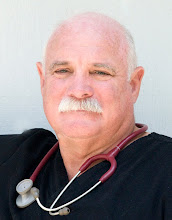Wednesday, July 20, 2011
Friday, July 1, 2011
Demoralized and denigrated nurses get burned out and there goes the quality of care. Don't take my word for it. Read the research.
INADEQUATE NURSE STAFFING INCREASES RISKS FOR PATIENTS
This research is helping to:
PREDICT factors involved in hospital nursing care and patient safety; PERSONALIZE methods to promote safe hospital environments and nurse job satisfaction; PREEMPT adverse patient outcomes by promoting safe nurse working conditions and staffing levels.
The U.S. is experiencing a shortage of registered nurses (RNs). This shortage has been especially felt in hospitals, where over half of all nurses work. A survey in 2004 found the average vacancy rate for RN positions was over 16%. Over the next decade, as the population of the U.S. ages, many in the “baby boomer” generation will enter retirement. This is expected to generate a surge in health care needs due to the effects of aging and chronic illness. By the year 2020, the demand for nurses is projected to exceed the supply by 20%. However, the link between availability of RNs and the outcomes of hospitalized patients has not been well publicized or understood.
Summary of Research
Dr. Linda Aiken, a professor at the University of Pennsylvania and Director of the NINR Center for Health Outcomes and Policy Research, has conducted several studies that examined the impact of nursing within the health care system. In looking at “Magnet” hospitals (hospitals known for their success in attracting and retaining nurses) and AIDS care units, she consistently found that higher nurse staffing levels were related to lower patient mortality and increased patient satisfaction.
Changing Practice, Changing Lives: 10 Landmark Nursing Research Studies 3In a widely reported study from 2002, Dr. Aiken examined job survey results from over 10,000 bedside nurses, in conjunction with hospital discharge abstracts of surgical patients. Results of the survey found that over 40% of the nurse respondents, who averaged 10 years of experience, reported high job dissatisfaction and emotional exhaustion or burnout.
The hospital data revealed that among post-operative patients, almost one-quarter experienced a major complication, and 2% died within 30 days of admission. Compared to units with an average patient/nurse ratio of 4 to 1, units with lower staffing had a 7% increased risk of patient death or failure-to-rescue (the development of a serious post-operative complication) for each extra patient assigned per nurse. An 8 to 1 ratio, the highest reported among the units in the study, increased the risk of adverse outcomes by 31%. In addition, poorer staffing intensified nurse dissatisfaction and burnout.
Implications
The round-the-clock presence of nurses on hospital units allows for surveillance of patient conditions and early detection and response to problems. Over the past decade, however, health care industry cost control measures have led to cuts in the nursing staff at many hospitals. These cuts, imposed at the same time that the Nation is experiencing a shortage of qualified, trained nurses, are driving some nurses from the profession. Dr. Aiken’s studies are among the first to document the relationship between nurse staffing on hospital units and the outcomes of patients. A good work environment lowers nurse burnout and staff turnover, while it improves patient safety and satisfaction with care.
According to Dr. Aiken, “Clearly, there is a direct relationship between nurse staffing and patient well-being. Nurse staffing is an issue that needs priority attention on a national scale. Patients’ lives depend on it.”
Reference
Aiken LH, Clarke SP, Sloane DM, Sochalski J, Silber JH. Hospital nurse staffing and patient mortality, nurse burnout, and job dissatisfaction. Journal of the American Medical Association. 2002; 288: 1987-1993.
4 National Institute of Nursing Research
Why I am running for the post of Commissioner in Hospital Dist One in Mt Vernon WA
I feel strongly that the primary mission of Skagit Valley hospital is to deliver safe, efficient care to our patients. Working as a hospital RN has given me an opportunity to see what works and what doesn’t. Patient care is the essence of why the Board exists. Every time the board makes a decision the members must ask themselves. “How will this effect patient care?” My executive experience in the Army and sixteen years running a construction business helps me see to see the big picture from the business/community viewpoint. My twenty years of hospital nursing allows me to see the micro-picture as seen from the hospital bedside. MD’s, other nurses, technicians, therapists, housekeepers, engineers, unit assistants, etc, all have insights that can, and do, impact the smooth running of the hospital. Being a conduit of these voices to the board will help guide good decision-making.
Subscribe to:
Comments (Atom)

